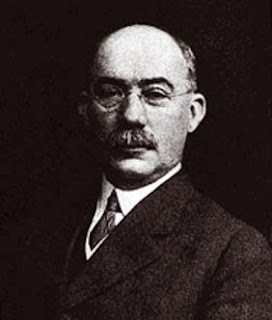- Las definiciones
- y los marcadores de definición.
PROJECT MANAGEMENT
Project management is the discipline of planning, organizing, securing and managing resources to bring about the successful completion of specific project goals and objectives. It is sometimes conflated with program management, however technically that is actually a higher level construction: a group of related and somehow interdependent engineering projects.
A project is a temporary endeavor, having a defined beginning and end (usually constrained by date, but can be by funding or deliverables),[1] undertaken to meet unique goals and objectives,[2] usually to bring about beneficial change or added value. The temporary nature of projects stands in contrast to business as usual (or operations),[3] which are repetitive, permanent or semi-permanent functional work to produce products or services. In practice, the management of these two systems is often found to be quite different, and as such requires the development of distinct technical skills and the adoption of separate management.
The primary challenge of project management is to achieve all of the project goals[4] and objectives while honoring the preconceived project constraints.[5] Typical constraints are scope, time, and budget.[1] The secondary—and more ambitious—challenge is to optimize the allocation and integration of inputs necessary to meet pre-defined objectives.
Ejercicio:
La definición:La gerencia de proyecto es la disciplina de planificar, organizar, asegurar y gerenciar los recursos para llegar al éxito en la completación de los objetivos y metas especificas del proyecto.y los marcadores de definición:
is,are,
B. Seleccione otro texto relacionado con su área de experticia y extraiga las palabras de secuencia u ordenamiento del tiempo.
* Marcadores de Tiempo
* Idea general del párrafo
History
Roman Soldiers Building a Fortress, Trajan's Column 113 ADProject management has been practiced since early civilization. Until 1900 civil engineering projects were generally managed by creative architects and engineers themselves, among those for example Vitruvius (1st century BC), Christopher Wren (1632–1723) , Thomas Telford (1757–1834) and Isambard Kingdom Brunel (1806–1859).[6] It was in the 1950s that organizations started to systematically apply project management tools and techniques to complex engineering projects.[7]
Roman Soldiers Building a Fortress, Trajan's Column 113 ADProject management has been practiced since early civilization. Until 1900 civil engineering projects were generally managed by creative architects and engineers themselves, among those for example Vitruvius (1st century BC), Christopher Wren (1632–1723) , Thomas Telford (1757–1834) and Isambard Kingdom Brunel (1806–1859).[6] It was in the 1950s that organizations started to systematically apply project management tools and techniques to complex engineering projects.[7]
Henry Gantt (1861-1919), the father of planning and control techniques.As a discipline, Project Management developed from several fields of application including civil construction, engineering, and heavy defense activity.[8] Two forefathers of project management are Henry Gantt, called the father of planning and control techniques,[9] who is famous for his use of the Gantt chart as a project management tool; and Henri Fayol for his creation of the 5 management functions which form the foundation of the body of knowledge associated with project and program management.[10] Both Gantt and Fayol were students of Frederick Winslow Taylor's theories of scientific management. His work is the forerunner to modern project management tools including work breakdown structure (WBS) and resource allocation.
Maracadores de tiempo
since early
Until 1900
in the 1950s
Idea general :
Hasta 1900 los proyectos de ingeniería civil fueron gestionados generalmente por arquitectos e ingenieros creativos propios. Fue en la década de 1950 que las organizaciones comenzaron a aplicar sistemáticamente las herramientas de gestión de proyectos y técnicas para proyectos de ingeniería complejos. Henry Gantt es el padre de la planificación y tecnicas de control quien es famoso por su tabla Gantt y Fayol por sus cinco funciones de gerencia.

No hay comentarios:
Publicar un comentario